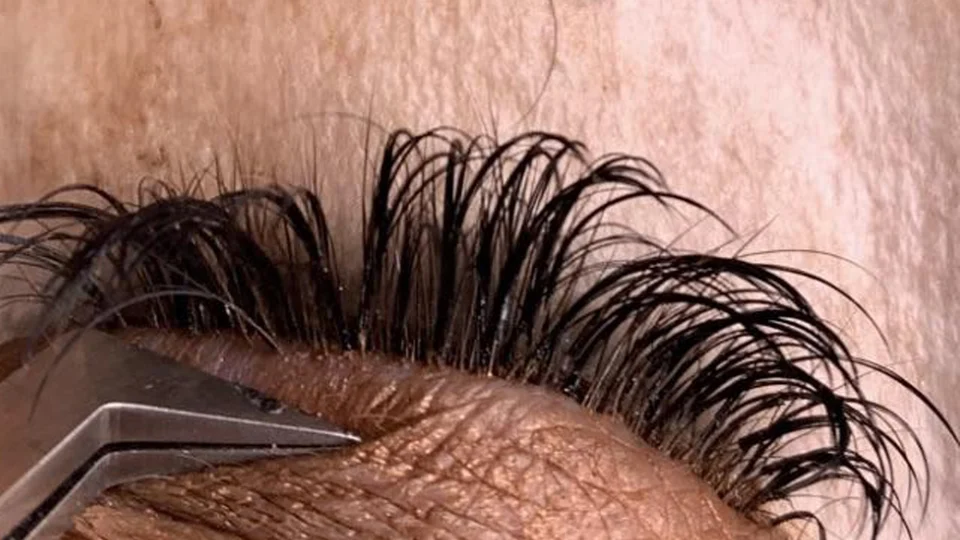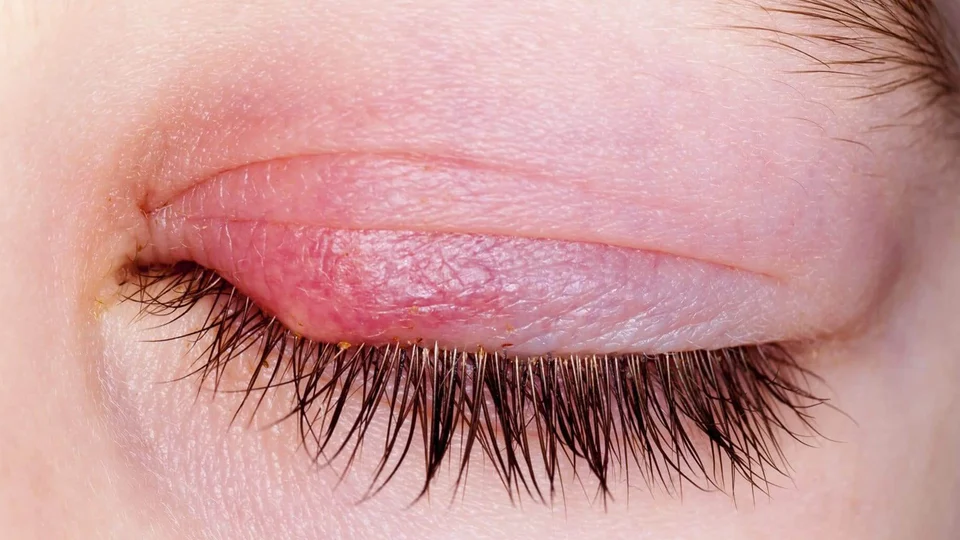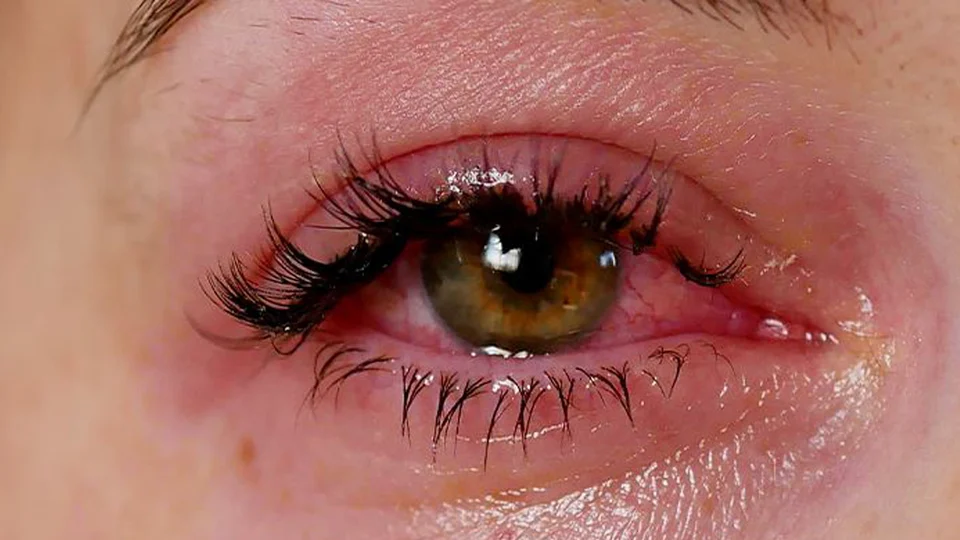How to Clean Eyelash Extensions: Complete Safety & Care Guide
Clean eyelash extensions daily using oil-free foam cleanser and lukewarm water. Use gentle downward motions, avoid oil-based products, and brush daily with a clean spoolie.
However, extensions aren't suitable for everyone - pregnant women, those with active eye conditions, or recent eye surgery should consult healthcare providers first.
MEDICAL DISCLAIMER
This article provides general information about eyelash extension care based on personal experience and available resources. It is not intended as medical advice.
Always consult qualified healthcare professionals for medical concerns, especially regarding eye health.
The safety recommendations and contraindications listed are based on ophthalmological guidelines and should not replace professional medical consultation.
CONTRAINDICATIONS: Who Should Avoid Eyelash Extensions
Before considering eyelash extensions, certain individuals should consult healthcare providers or avoid extensions entirely:
Pregnancy Nursing
- Hormonal changes during pregnancy can affect natural lash growth cycles
- Increased sensitivity to adhesive chemicals may develop
- Limited positioning options during application may be uncomfortable
- Recommendation: Consult your obstetrician before getting extensions during pregnancy or while breastfeeding
Active Eye Conditions
Avoid extensions if you currently have:
- Conjunctivitis (pink eye) - bacterial, viral, or allergic
- Active styes or chalazion
- Blepharitis (eyelid inflammation)
- Dry eye syndrome (severe cases)
- Any active eye infection or inflammation
Recent Medical Procedures
Wait and consult your doctor if you've had:
- LASIK or other eye surgery (wait minimum 6 months)
- Cataract surgery
- Retinal procedures
- Any facial cosmetic surgery near the eye area
Medical Treatments
Exercise caution if undergoing:
- Chemotherapy or radiation therapy (can affect lash growth and sensitivity)
- Immunosuppressive treatments
- Medications affecting hair growth
- Steroid treatments (topical or systemic)
Chronic Conditions
Consult healthcare providers if you have:
- Autoimmune disorders affecting skin or eyes
- Diabetes (affects healing and infection risk)
- Severe allergies or atopic dermatitis
- Trichotillomania (compulsive hair pulling)
CRITICAL WARNING SIGNS: When to Seek Medical Attention
SEEK IMMEDIATE EMERGENCY CARE for:
- Sudden vision changes or vision loss
- Severe eye pain that doesn't resolve
- Signs of serious infection:
- High fever with eye symptoms
- Rapidly spreading redness or swelling
- Thick, colored discharge (green, yellow, or bloody)
- Severe swelling that closes the eye

CONSULT AN OPHTHALMOLOGIST WITHIN 24-48 HOURS for:
- Persistent symptoms lasting more than 2 days:
- Moderate eye pain or discomfort
- Continuous tearing or discharge
- Sensitivity to light (photophobia)
- Feeling of something in the eye that won't resolve
- Progressive worsening of any symptoms
- New visual disturbances like blurred vision or halos
- Eyelid changes including persistent swelling, drooping, or skin changes
SCHEDULE ROUTINE CONSULTATION for:
- Mild, intermittent irritation
- Questions about extension suitability
- Concerns about proper aftercare
- Planning extensions with existing eye conditions
Understanding the Risks: What Medical Professionals Say
The American Academy of Ophthalmology identifies several serious risks:
Infection Risks
- Bacterial infections can affect the cornea, potentially causing permanent vision damage
- Folliculitis (infection of hair follicles) can lead to scarring and permanent lash loss
- Poor hygiene practices during application or aftercare increase infection risk
Allergic Reactions
- Contact dermatitis from adhesive ingredients
- Cyanoacrylate sensitivity can develop over time
- Formaldehyde exposure from certain adhesive types
Physical Damage
- Traction alopecia - permanent loss of natural lashes from repeated pulling
- Corneal abrasions from improperly applied or maintained extensions
- Eyelid trauma from removal attempts or poor application technique
Boundary Between Personal Experience and Medical Recommendations
Personal Experience Insights(Anecdotal - Individual Results May Vary)
Throughout this guide, personal experience sections are clearly marked and include:
- Individual trial-and-error discoveries
- Subjective comfort preferences
- Lifestyle adaptation tips
- Product recommendations based on personal use
Medical Safety Guidelines (Based on Professional Recommendations)
Medical advice sections are based on:
- American Academy of Ophthalmology guidelines
- Peer-reviewed ophthalmological research
- Professional safety standards
- Healthcare provider recommendations
Important Distinction: Personal experience can guide comfort and maintenance choices, but medical safety decisions should always involve qualified healthcare professionals.
Why Cleaning Eyelash Extensions is Essential
From a health perspective, proper cleaning prevents bacterial growth that can lead to serious eye infections. From my personal experience, clients who follow proper cleaning routines consistently get 6-8 weeks from their extensions, while those who avoid washing see noticeable deterioration by week 3.
Health Consequences of Poor Hygiene:
- Bacterial overgrowth leading to blepharitis
- Clogged meibomian glands affecting tear production
- Increased risk of styes and chalazion
- Weakened natural lash follicles
Aesthetic Consequences:
- Oil and makeup buildup weakening adhesive bonds
- Extensions clumping together, looking unnatural
- Shorter extension lifespan (3-4 weeks instead of 6-8)
- Premature lash loss
Step-by-Step Cleaning Guide
Step 1: Prepare Your Setup
Medical-grade supplies preferred:
- Oil-free lash cleanser (ophthalmologist-recommended brands when possible)
- Clean spoolie brush (replace weekly)
- Lukewarm sterile saline or filtered water
- Clean, lint-free towel
- Cotton swabs (not pads - reduce fiber risk)
Temperature considerations: Lukewarm water (body temperature) is optimal. Hot water can weaken adhesive bonds, while cold water doesn't effectively dissolve oils and debris.

Step 2: Gentle Wetting Technique
Medical safety approach: Instead of direct water pressure, use cupped hands to gently apply lukewarm water to the lash line. This minimizes mechanical stress on the extensions and natural lashes. In the shower: Turn away from water stream and use hands to bring water to lashes rather than allowing shower pressure to hit directly.
Step 3: Cleanser Application
Professional technique: Work a small amount of oil-free cleanser into light foam in clean palms. Apply using gentle downward motions with fingertips, focusing on the lash base where debris accumulates most. Duration: Gentle massage for 10-15 seconds per eye - enough to dissolve buildup without excessive manipulation.
Step 4: Thorough Rinsing
Critical for safety: Any residual cleanser can cause irritation or interfere with adhesive bonds. Rinse multiple times with lukewarm water until no product residue remains.
Step 5: Proper Drying and Brushing
Medical recommendation: Pat dry gently with clean, lint-free material. Never rub or pull. Personal technique discovery: Brush lashes when slightly damp (80% dry) using clean spoolie in upward and outward motions. This separates any lashes that stuck together while wet without pulling on extensions.
Sleep Optimization for Extension Longevity
The Science Behind Sleep Position
Medical perspective: Sleeping face-down creates pressure and friction that can damage both extensions and natural lashes. The mechanical stress can also irritate the delicate eye area.
Recommended Sleep Setup
Back sleeping remains optimal for extension preservation:
- Use travel pillow or side barriers to maintain position
- Transition gradually if you're typically a side sleeper
Silk/satin pillowcases provide medical benefits beyond extension care:
- Reduced friction prevents hair breakage and skin irritation
- Less bacterial buildup compared to cotton
- Hypoallergenic properties benefit sensitive individuals
3D contoured sleep masks:
- Create protective space around extensions
- Prevent direct contact pressure
- Choose masks specifically designed for lash extensions
- Ensure proper ventilation to prevent moisture buildup
Cleaning Frequency Guidelines
Evidence-Based Recommendations
Individual Profile | Cleaning Frequency | Medical Rationale |
|---|---|---|
Daily makeup wearers | Daily | Makeup residue harbors bacteria; oil-based products compromise adhesive |
Oily skin types | Daily | Excess sebum production accelerates bacterial growth and adhesive breakdown |
Normal skin, minimal makeup | Daily (preferred) or every 2 days | Maintains optimal lash hygiene; prevents debris accumulation |
Dry skin, no eye makeup | Every 2-3 days minimum | Less oil production but regular cleaning prevents bacterial overgrowth |
Post-workout/swimming | Immediately after activity | Sweat, chlorine, and salt water can damage lashes and create bacterial environment |
Current professional consensus: Daily gentle cleaning has become the gold standard, with every 2-3 days as the absolute minimum frequency.
Safe Products and Dangerous Ingredients
Medically Approved Options
Specialized lash cleansers:
- Formulated specifically for extension adhesives
- pH-balanced for eye area sensitivity
- Often recommended by ophthalmologists
Alternative safe options:
- Oil-free foaming face washes (CeraVe Foaming Facial Cleanser)
- Diluted baby shampoo (1:3 ratio with sterile water)
- Oil-free micellar water
- Preservative-free sterile saline solution
Ingredients to Absolutely Avoid
Immediate adhesive damage:
- Any oils (coconut, mineral, essential oils)
- Oil-based makeup removers
- Petroleum-based products
Chemical concerns:
- Glycols and glycerin (can interfere with adhesive)
- Alcohol-based products (too harsh, can cause dryness)
- Products containing formaldehyde
- Waterproof makeup removers
- Cream-based cleansers
Personal experience warning: Using coconut oil makeup remover once resulted in several extensions on my pillow the next morning. Oil breaks down cyanoacrylate adhesive almost instantly.
Special Situations and Lifestyle Adaptations
Swimming Protocol
Medical safety measures:
- Always wear swimming goggles to protect from chemicals
- Rinse immediately with fresh water after swimming
- Chlorine and salt water are harsh on both adhesive and natural lashes
Post-swim care:
- Gentle cleanse with regular routine within 2 hours
- Monitor for any unusual irritation or sensitivity
Exercise and Sweat Management
Immediate post-workout care:
- Use gentle, oil-free cleansing wipes designed for sensitive eyes
- Follow up with proper cleansing routine later
- Avoid touching or rubbing eyes during workouts
Makeup Removal Technique
Professional approach:
- Use only water-based makeup removers
- Apply with cotton swabs (more precise than pads)
- Work from outer corner inward following natural growth pattern
- Remove all makeup before lash cleaning routine
- Never attempt to remove waterproof mascara from extensions
Troubleshooting Common Problems
Extensions Feel Stiff or Crunchy
Likely cause: Cleanser residue buildup Solution: More thorough rinsing; consider switching to gentler product Medical concern: Residue can cause irritation and bacterial growth

Rapid Extension Loss
Check for:
- Hidden oils in skincare products
- Too-aggressive cleaning technique
- Sleeping position issues
- Underlying health changes affecting hair growth
When to consult professional: If losing more than 3-5 extensions per day consistently
Irritation or Sensitivity
Immediate steps:
- Discontinue use of any new products
- Gentle saline rinse
- Avoid rubbing or touching
Seek medical attention if:
- Symptoms worsen or persist beyond 48 hours
- Signs of infection develop
- Vision changes occur
Advanced Care: Saline Solution Method
For Sensitive Eyes
Medical rationale: Sterile saline closely mimics natural tear composition, making it ideal for individuals with sensitive eyes or contact lens wearers. Application technique:
- Use only preservative-free sterile saline
- Apply to cotton swab, gently press against lash line
- Sweep downward following natural growth pattern
- Particularly helpful when regular cleansers feel too strong
Professional vs. Home Care Balance
When to Seek Professional Help
- Initial application should always be by certified technician
- Removal should be performed professionally to prevent damage
- Regular fills every 2-3 weeks maintain optimal appearance and health
- Any concerning symptoms warrant professional evaluation
Home Care Responsibilities
- Daily gentle cleaning and maintenance
- Proper sleep positioning and protection
- Avoiding contraindicated products and activities
- Monitoring for warning signs
Long-term Eye Health Considerations
Natural Lash Health
Protecting your natural lashes:
- Take breaks between extension sets (2-4 weeks every 3-6 months)
- Use lash-strengthening serums during break periods
- Monitor natural lash condition regularly
Signs of Healthy Natural Lashes
- No thinning or bald spots
- Normal growth cycles resuming during breaks
- No persistent irritation or sensitivity
- Lashes return to pre-extension condition after breaks
Frequently Asked Questions
Can I get extensions if I wear contact lenses?
Generally yes, but inform your technician. You may experience increased sensitivity initially. Remove contacts if any irritation develops during or after application.
What if I'm pregnant - are extensions safe?
Consult your obstetrician first. Hormonal changes can affect lash growth and sensitivity. Many professionals recommend waiting until after pregnancy and nursing.
How do I know if I'm having an allergic reaction?
Watch for: persistent redness, swelling, itching, burning sensation, or respiratory symptoms. Remove extensions immediately and consult healthcare provider if symptoms are severe.
Can extensions cause permanent lash loss?
With proper application, quality products, and appropriate care, permanent loss is unlikely. However, repeated trauma from poor technique, aggressive removal, or traction can cause permanent damage.
Is it normal to lose natural lashes with extensions?
Some natural lash shedding is normal (1-5 lashes per day naturally). Concerning signs include bald patches, excessive thinning, or lashes not regrowing after breaks.
Conclusion
Proper eyelash extension care involves much more than cleaning technique - it requires understanding medical contraindications, recognizing warning signs, and maintaining realistic expectations about risks and benefits. Key Safety Takeaways:
- Not everyone is a suitable candidate for extensions
- Professional application and removal are essential
- Daily gentle care significantly extends extension life and maintains eye health
- Warning signs should never be ignored
- Regular breaks help maintain natural lash health
Personal Experience Summary: Through years of extension wear and extensive research, gentle daily cleaning with oil-free products, proper sleep protection, and attentive monitoring of any changes have been essential for both beautiful lashes and healthy eyes. The Bottom Line: Extensions can be enjoyed safely when proper precautions are taken, contraindications are respected, and eye health is prioritized over aesthetic goals. When in doubt, consult qualified healthcare professionals - your vision is irreplaceable.
Medical References and Resources
Professional Organizations:
- American Academy of Ophthalmology
- American Optometric Association
- International Association of Lash Artists
For Healthcare Providers:
- Current guidelines available through professional medical databases
- Continuing education on cosmetic procedure risks
- Patient education resources for informed consent
Emergency Resources:
- Local emergency departments for severe reactions
- Poison control centers for chemical exposure
- Ophthalmology urgent care for eye-specific concerns
References:
1. American Academy of Ophthalmology. (2018). Eyelash Extension Facts and Safety: https://www.aao.org/eye-health/tips-prevention/eyelash-extension-facts-safety
2. Amano Y, et al. (2012). Ocular disorders due to eyelash extensions. Cornea, 31(2), 121-125: https://pubmed.ncbi.nlm.nih.gov/22134404/
3. FDA. (2023). Eye Cosmetic Safety: https://www.fda.gov/cosmetics/cosmetic-products/eye-cosmetic-safety
4. Cleveland Clinic. (2017). Blepharitis (Eyelid Inflammation): https://my.clevelandclinic.org/health/diseases/10032-blepharitis
5. Healthline Medical Network. (2023). Blepharitis from Eyelash Extensions: https://www.healthline.com/health/blepharitis-from-eyelash-extensions